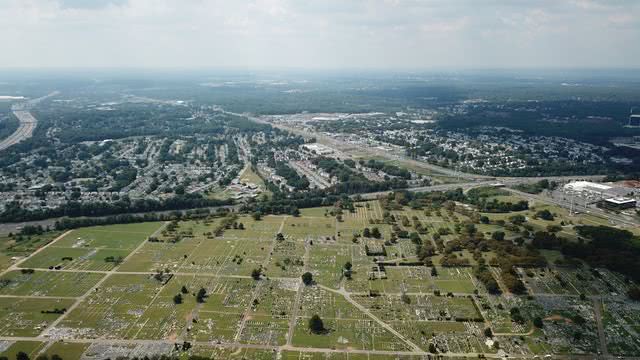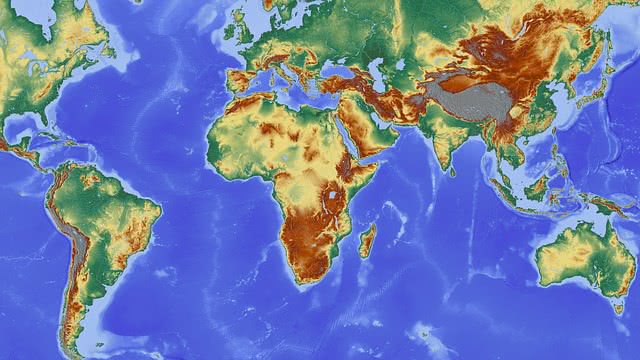The population of the world is increasing day by day and this is putting a strain on the existing infrastructure. The available land has now become only for residential purposes and agriculture is shrinking with every passing day. Forest areas are getting encroached to meet the ever-increasing demand for food and accommodation.
With the crowding of the urban settlements living conditions have deteriorated further and it is becoming difficult to provide the basic needs for sustenance. This is true for the rural areas as well. With the growing numbers, the agricultural output is not enough and is pushing the rural population further into poverty. For a nation to thrive and improve the economy, a scrupulous development plan is a must. A development plan should encompass both the rural and urban sector and all the various aspects of the economy like industrial, agricultural, educational, research, health care, and infrastructure.

Related: Rural-urban continuum and causes of rural-urban continuum, Greenfield Development
The need of the hour is smart, efficient and fast planning so that a larger number of functions is accommodated in less time and space. With the development in Remote sensing technologies, working on a development plan for a larger region has become much easier. Using GIS and remote sensing technology a map of the region can be made with the help of which a layout can be developed to help in the building of infrastructures for residential and commercial purposes. Remote sensing can help in identifying the best roads and railway tracks that be laid out to improve transportation. Using GIS and remote sensing in development plans, planners can help to take development to new heights.
Urban development plan
With GIS the scale of planning area can vary from a whole city to a small block within the city. This is much easier than awaiting land survey reports and data as that would be very time-consuming. In urban development plan the sectors that are frequently scaled is transport, housing, land use and development, environment and infrastructure. Every planning involves various stages, determination of the planning objectives, analysis of existing structure and design, citing the planning options, selecting the most feasible planning option, implementation, monitoring, evaluation and feedback.
Strategic urban planning has seen a lot of changes in the past few decades with an increasing participation of the citizens in making important decisions in the planning processes. Many community and social workers now involve in the planning from the initial stages. There are various theories of urban planning viz, Advocacy planning, Radical planning, Bargaining model, Communicative planning, Transactive planning, Mixed scanning model, Blueprint planning, Synoptic planning, Participatory planning, and Incrementalism. All these planning theories are based on scientific concepts and approach.
Urban planning includes zoning as per the future population growth estimates, mapping, land analysis for residential and commercial constructions, park spaces, checking the water supply needs and routes from source, identifying transportation routes and patterns based on economic and connectivity needs, providing health care and social services.
For planners, engineers and surveyor’s visualization and spatial analysis of the region is very important and this is usually done with the help of remote sensing and GIS technology. In order to visualize AS TO how the city will develop and to understand and assess the impact of the intervention’s planners use various models. These models show the relationship and patterns in geographic, economic and demographic data. The government rules and regulations on building codes and other structures are unavoidable and hence all structures and plans need to adhere to these regulations.
Related: City Development Plan, Factors affecting land value
Rural development plan
Similarly, in the rural sector planning is required to improve the quality of life and the use of land for agriculture and residential purposes. Rural development has always been centered on the use of the land and natural resources and the provision of basic amenities that include health care, transportation, and education. However, with the increasing urbanization and the ever-increasing changes in global production networks the development plans for rural areas have started to be changed and has extended to include much more than just a focus on agriculture or a resource-based industry. Based on the availability of natural resources the rural areas vary from one another in many distinct ways resulting in a variety of approaches to plan for overall development.
Rural development plans are mainly to further the socio-economic development of the region and is mainly aimed at improving the rural lives with active participation from the people in the planning. Many countries have been implementing rural development plans through ecological farming projects. With the help of the multilayered mapping feature of GIS, prime agricultural land can be identified, surface water, high flood, and land erosion zones can be identified. This helps in planning out the layout of the residential areas and the agricultural areas.

GIS technology helps in precision farming in the agricultural sector to enhance the productivity of the crops and also to retain the fertility of the soil. With detailed information on the soil quality and elevation patterns of the region, the ideal crop type can be identified that would be compatible with the soil type. This helps in improving the production and in turn, helps in improving the economic standing of the farmer. With details of surface and groundwater, irrigation options can be planned out with precision for the crops as well as the residents.
With the access to remote sensing technology, larger surface area can be surveyed for developmental plans so that the land used is not random and serves the maximum purpose. GIS helps in identifying the mineral-rich regions which can be exploited to offer economic opportunities as well. Because GIS mapping allows a large area of land surface to be screened at a time it becomes very feasible to plan the layouts of the water pipes, electrical cables, gas lines and the apt locations of telecommunication towers.
Land surface details derived from elevation maps generated using GIS technology gives a very accurate understanding of the zones that are prone more prone to natural hazards. The slope of the land helps to determine the zones of landslides, floods, and sediment accumulation. This data, in turn, is instrumental in planning the evacuation strategies and planning the residential regions and the rest of the infrastructure that would cause the minimum damage and can counter any harsh weather conditions that can impact the region due to its physiological features.

Planners now take advantage of GIS and remote sensing technologies to keep track of changes in an area and develop the infrastructure accordingly. It helps to identify the changes in the geographical features and behavior of the land over time and enables the planners to make informed decisions with regards to the development in the region. With Geospatial analysis and modeling, development planning for any region has become much simpler than it was any time before allowing the planners to come up with the most feasible designs for the citizens. Many development assessment models are now prepared to understand and plan accordingly.
Also Read: Rural urban fringe: Concept, History, Reasons, Issues, Satellite City